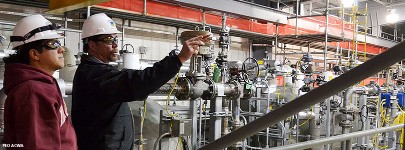A Look at Law
The question of how often must an arc flash analysis be reperformed normally comes up during e-Hazard’s Low Voltage training classes primarily from engineers, safety managers or individuals who are responsible for the company’s electrical safety program.
This is an excellent question that isn’t asked enough. When this question is brought up, it shows these individuals and companies genuinely care about electrical safety for their workers.
To address this inquiry, we should start off by reviewing “Da Law,” meaning OSHA regulations pursuant to 29 Code of Federal Regulations (CFR), and then transition to applicable industry consensus standards, like NFPA 70E®, Standard for Electrical Safety in the Workplace.
OSHA contains a few high-level safety protocols for the protection of workers from “electric burns, electric arcs or flashes” under 1910.335(a) subpart S of the General Industry regulations. Its parallel Construction standard 1926.416(a) subpart K only addresses electric shock hazards. Unfortunately, neither even hints at an arc flash analysis.
On the other hand, OSHA’s electric utilities regulations, according to General Industry 1910.269(i)(8) subpart R and Construction 1926.960(g) subpart V, contain some generic guidance for the employer to “assess the workplace to identify employees exposed to hazards from flames or from electric arcs.” They provided a mandatory implementation date of April 1st, 2015, that prompted many electric utility companies to affectionally refer to this new obligation as a “Bad April Fool’s Joke”.
But apart from the commencement date, neither directs a periodicity for reperformance of a very important element of your electrical safety program.
A Look at Standards
As revealed above, OSHA laws and regulations traditionally tell the employer “What to do” in order to keep their employees safe from recognized hazards, but oftentimes lack much guidance in “How to do it,” which is very true of electrical safety, particularly in the realm of arc flash. This is where the consensus standards tend to shine, especially NFPA 70E® because they will provide the “how to’s” needed to effectively implement OSHA’s prescriptive statutes.
A transition to NFPA 70E® most certainly will assist employers with the details necessary to sustain a top-notched electrical safety program. However, please note 70E® uses the term “Incident Energy Analysis” rather than the common vernacular of arc flash study or arc flash calculations. But rest assured it’s the same thing.
Article 100 defines the Incident Energy Analysis as “a component of an arc flash risk assessment used to predict the incident energy of an arc flash for a specified set of conditions.”
And article 130.5(G) is where we will find when and how often the incident energy analysis must be performed.
“The incident energy analysis shall be updated when changes occur in the electrical distribution system that could affect the results of the analysis. The incident energy analysis shall also be reviewed for accuracy at intervals not to exceed 5 years.”
Two Conditions for Review
Essentially, two conditions are identified when the analysis must be updated and reviewed.
The first is a mandatory update of the analysis whenever changes are made to the electrical distribution system. In this area, many people limit their thinking of such “changes” to major projects that significantly modify a facility’s electric system, such as upgrading old equipment with newer design or when installing brand new equipment.
However, small subtle alterations – like adjusting breaker trip settings, using different types of fuses, or when the electric utility company replaces the transformer(s) providing power to the facility – can significantly impact the incident energy levels. These are often overlooked.
The second condition is a review of the analysis based on time alone with an update conditional. The maximum permitted interval the incident energy analysis must be reviewed is five (5) years. But for large campuses with many structures and buildings, a good practice is to conduct the review on an annual or biannual basis due to the normal evolution of ongoing need for routine maintenance and system improvements.
If any changes to the electrical distribution are identified, then only those parts affected by the change must be reanalyzed. This proactive approach will ensure the information shown on the equipment labels for the arc flash incident energy levels are always accurate. We must remember the equipment labels are the primary means used by our electricians and technicians to determine the level of arc-rated (AR) PPE needed for their safety and the accompanying arc flash boundary (AFB) for the safety of other employees.
Long-term Success
Performing an initial incident energy analysis, AKA arc flash analysis, is crucial for initiating your electrical safety program. But reevaluating the analysis at set intervals for accuracy is one of the components that will fuel your program for the long term.


George very well said! I appreciate your passion for electrical safety and placing our people in the best possible position to be successful! Having a program in place that’s structured and embraced by the team will ensure our people have the right level of protection in the unlikely event something goes wrong!